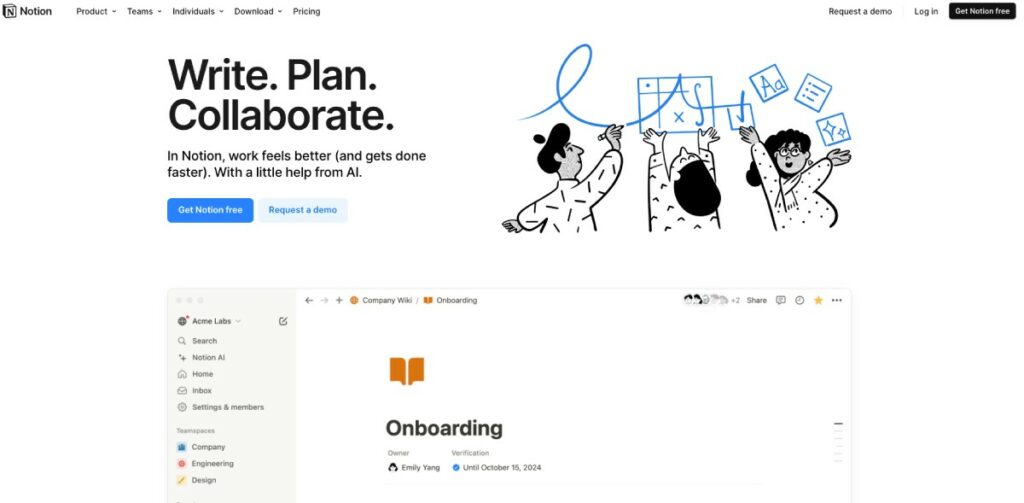In today's digital world, businesses have access to a huge range of software and cloud services for different functions such as web design, smart legal document generation, email management, and communication.
Using such platforms can be incredibly beneficial for small businesses as they can increase efficiency, reduce costs, and streamline processes. However, a common barrier to this is the learning curve and the need to learn some type of coding language to use the platform effectively.
This is where no-code platforms pay dividends. As you will see below, these platforms have a simpler learning curve and allow small businesses to thrive without the typical drawbacks. In this guide, we look at examples of popular no-code platforms and their benefits for your business consideration.
What is a No-Code Platform?
It’s important to first understand the premise of no-code platforms and their definition. A no-code platform or software can be described as a tool that allows you to build something (like a website, app, or module) without typing any underlying programming code.
A prime example could be a website builder. A website is built using various different coding languages such as HTML, CSS, and Javascript. Historically, it would be a requirement that you had to understand how to write these languages and their syntax to be able to create a website.
With a no-code web development platform however, that coding language isn’t needed. Instead, the platform presents you with a drag and drop interface and uses WYSIWYG processes (What You See is What You Get) to do the work for you.
For example, you might upload a product image from your computer and drag it onto the product web page. When you perform this action, the no-code platform is writing the related website code underneath in the background.
This has become a popular web development trend but it’s just one example of no-code platforms. They are also widely used for email management, communication, and mobile app development.
Examples of No-Code Platforms
To give some more context and understanding for no-code platforms, we’ve listed six well-known examples below. These include communication, app development, email management, and more.
Airtable

Airtable is one of the largest no-code / low-code app building platforms and it enhances this development process with the use of AI. It can be used for a range of business processes including project management, finance, HR, product management, operations, and marketing.
Airtable also integrates with a range of platforms such as Slack, Jira, Zendesk, and Google Drive. The Airtable extensions section also has a huge range of add-ons that teams can use to enhance the functionality of their apps including video snippets, flow charts, data imports, and language translations.
Mailchimp

While there are plenty of Mailchimp alternatives, it remains one of the top no-code email solutions. At its most basic, Mailchimp is an email manager, but it offers much more. Other features include email marketing, website creation, social media marketing, SMS marketing, and audience management.
The various no-code tools are facilitated with a range of reports and analytics so that businesses can better understand their customers and create more engaging email and SMS marketing campaigns. Mailchimp also integrates with over 300 other apps including Wix, Shopify, Canva, WooCommerce, and Salesforce.
Quickbase

Quickbase offers no-code and low-code solutions for dynamic businesses. It allows businesses to improve user management, data integrity, and application governance all in an easy-to-use format that has a short learning curve. It also features no-code CRM software so that businesses can effectively manage important processes like emails, meetings, phone calls, and sales activity.
Zapier

Zapier is a no-code automation solution that can be implemented across 7000+ apps. It leverages AI technology and a range of products including Zaps, interfaces, app integrations, and security.
The premise is that businesses can use Zapier to automate repetitive tasks that would otherwise take valuable employee time. For example, Zapier can be integrated with Gmail or a business email solution to automate email replies to customers.
Similarly, it can be used to develop detailed AI chatbots that can give 24/7 customer support. It integrates with some of the most popular apps including Slack, Gmail, Mailchimp, HubSpot, ChatGPT, YouTube, and Facebook Pages.
Notion

Notion provides a host of no-code web development tools that allows businesses to create numerous different web-based features. The suite of tools is suitable for small businesses in various fields including product design, engineering, design, marketing, and IT. It can also be useful for personal use, students, teachers, and content creators.
The Notion tools use drag-and-drop features and facilitate the creation of websites, blogs, resumes, portfolios, Wiki pages, and more. The development process is made easier with a range of pre-made templates and tutorial documentation.
Kissflow

Kissflow features both no-code and low-code app development tools. The no-code app builder has some excellent tools including collaboration so that multiple employees from a business can work on projects. Examples of things businesses can create using Kissflow include forms, data management tools, workflows, reports, and system integrations.
Draftbit

Draftbit is a top mobile app development platform that uses a no-code approach. The editor uses a visual style where users can easily incorporate elements like icons, images, text, and touchables. While the visual elements are being added, Draftbit writes the underlying code.
Benefits of No-Code Platforms for Small Businesses
Now that we’ve looked at examples of no-code platforms and what they do, we can explore the benefits of using this type of software. This includes improved speed, efficiency, and a faster learning curve.
Cost Efficiency
By using no-code platforms, small businesses can potentially make savings on things like web development and app development. Traditionally, to create an app or build a website, a small business would need to either hire a dedicated web developer on their payroll, or work with a third-party developer, both of which would be costly.
No-code platforms negate the need for these expenses. Instead, existing staff can utilize these simple software solutions and still get the desired end results. The need for the traditional consultation process is greatly reduced and this can ultimately save costs which is vital for small businesses that often have limited resources.
Improved Speed and Agility
Building on the above pointer, the traditional consultation process is also often lengthy. For example, if a business wanted to build an app to improve internal document management, they would have to consult a specialist app developer.
This would mean an initial consultation meeting, price and service agreements, and a heap of back and forths between the business and third-party developer. Essentially, the result is a convoluted process where the business is at the mercy of the third-party developer and their time constraints.
A no-code solution moves the entire process in-house. This means improved speed and agility as the business can keep a tighter control on communication and progress and make sure the development is given as much resources as needed.
Reduced Maintenance Strain
Programs like smart legal document generation, web development platforms, and app builders often have automatic updates and take care of maintenance for the business. There is also no need to continually review and modify the underlying code and check for errors.
This is all taken care of in the background. As a result, employees using these no-code solutions can concentrate on the development and quality of work, instead of getting bogged-down with maintenance.
Accessibility and Empowerment
Many employees want progression and to learn new skills and no-code software provides a prime opportunity to do this. Perhaps a business has an employee who always wanted to explore app development but never had the chance. They could be given this chance by utilizing no-code platforms.
Due to the relative simplicity in comparison to learning a coding language from scratch, the accessibility is fantastic and it means an employee can learn new skills much quicker. While improving efficiency and reducing costs, businesses can also push their staff forward and help them develop and thrive.
Quicker Learning Curve
Consider these two scenarios. First, we have the coded approach. The employee has to spend countless hours learning a coding language from scratch, how it works, and how to use it to create end products.
Second, we have the no-code approach. The employee simply reads a little background info on the coding language and what it does, and then jumps onto the no-code solution and gets to work. No-code solutions hasten the learning curve. The employee will lack the underlying coding knowledge, but the point is that due to the complexity and utility of the no-code platforms, this isn’t an issue.
Endnote
No-code software could potentially revolutionize your business and allow for increased productivity, speed, and efficiency. You could also reduce maintenance strain and empower your staff to learn new skills.
However, it’s important that you assess the viability of using no-code platforms and consider the pros and cons. For example, there are circumstances where you may need more control and coding knowledge for what you want to achieve. Before using a no-code platform, it’s advisable to do a thorough assessment of the available options to see if this approach is sufficient for your business goals.
Ludjon, who co-founded Codeless, possesses a deep passion for technology and the web. With over a decade of experience in constructing websites and developing widely-used WordPress themes, Ludjon has established himself as an accomplished expert in the field.









Comments